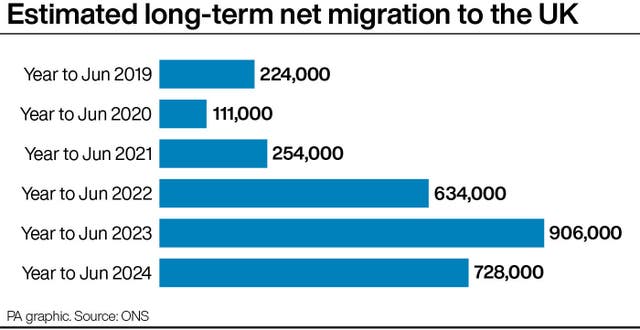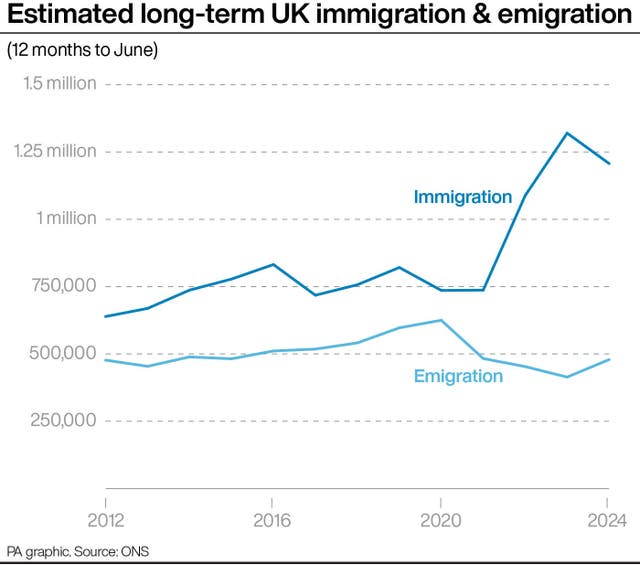Net migration to the UK hit a higher than previously thought record of 906,000 in the year to June 2023, revised official estimates show.
The measure for the difference between the number of people arriving and leaving the country then dropped by 20% in the latest period, the 12 months to June 2024, and now stands at 728,000.
The total for the year to June 2023 has been revised upwards by 166,000 from the initial estimate of 740,000, according to Office for National Statistics (ONS) figures published on Thursday.
Meanwhile, the cost of the UK’s asylum system has risen to £5 billion, the highest level of spending on record and up by more than a third in a year, according to separate Home Office data published at the same time.
The figures, covering the previous Conservative government’s administration prior to the general election, come as new Tory leader Kemi Badenoch admitted her party had failed on migration.

“I more than understand the public anger on this issue. I share it.”
Earlier on Thursday, Labour’s migration minister Seema Malhotra declined to say what level of net migration would be acceptable when repeatedly asked for a number, instead telling BBC Breakfast that policy must be based on “a credible and serious plan” and the Government should not “just pull figures out of the air”.
The ONS said that although remaining high by “historic standards”, net migration is “beginning to fall”.
The revisions are as a result of the ONS continuing to review its net migration figures as more complete data becomes available as well as improving how it estimates the migration behaviour of people arriving in the UK from outside the European Union.
Some 1.2 million people are estimated to have arrived in the UK in the year ending June 2024, while 479,000 are likely to have left.
This compares with 1.3 million who arrived in the UK in the year to June 2023 and 414,000 who left.
The drop in the overall level of net migration has been driven mainly by a fall in the number of dependents arriving in the UK on study visas from outside the EU.
ONS director Mary Gregory said: “Since 2021, long-term international migration to the UK has been at unprecedented levels. This has been driven by a variety of factors, including the war in Ukraine and the effects of the post-Brexit immigration system. Pent-up demand for study-related immigration because of travel restrictions during the coronavirus pandemic also had an impact.

“Over the first six months of 2024, we are also seeing decreases in the number of people arriving for work-related reasons. This is partly related to policy changes earlier this year and is consistent with visa data published by Home Office.
“We are also starting to see increases in emigration, most notably for those who came to the UK on study-related visas. This is likely to be a consequence of the higher numbers of students coming to the UK post-pandemic who are now reaching the end of their courses.”






